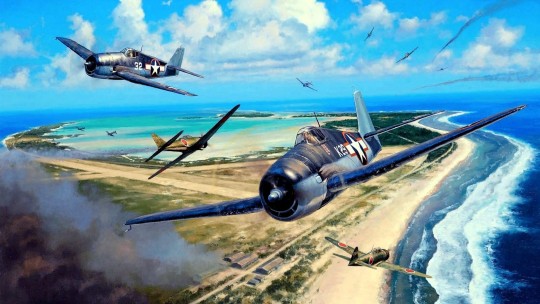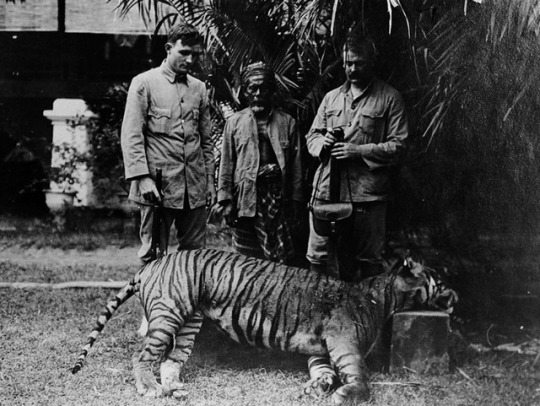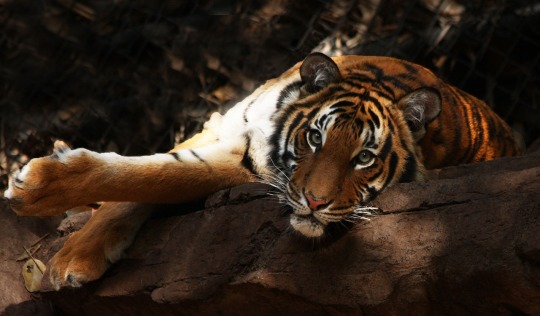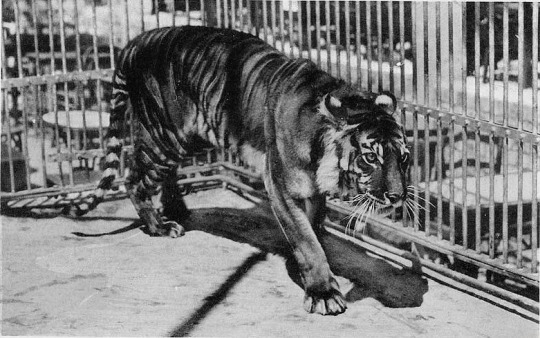#Java Sea Campaign
Explore tagged Tumblr posts
Text
Short Introduction to Rear Admiral Karel Doorman! (In het Engels en Nederlands)


Prefacing this by mentioning who he is,
Karel Doorman is a Dutch Rear Admiral, later acknowledged as an Admiral. He was one of the most competent Admirals of the Dutch Naval forces, hence why he was selected to lead the battle of Java Sea.
Karel Doorman was een Nederlandse schout-bij-nacht, later erkend als admiraal. Hij was een van de meest bekwame admiraals van de Nederlandse marine, en daarom werd hij uitgekozen om de Slag in de Javazee te leiden.
Despite his significant role, Doorman remains a lesser-known figure from the Second World War, but he holds a very special place in my heart. There isn’t much written about him, so I’ve done my best to gather what I could. Hopefully, this helps anyone looking to learn more about him! :3
Ondanks zijn belangrijke rol blijft Doorman een minder bekende figuur uit de Tweede Wereldoorlog, maar hij heeft een heel speciaal plekje in mijn hart. Er is niet heel veel over hem geschreven, dus ik heb mijn best gedaan om te verzamelen wat ik kon vinden. Hopelijk helpt dit iedereen die meer over hem wil leren! :3
Doorman was born in 1889 in Utrecht and grew up as a Roman Catholic in a military family. He dedicated 32 years to the Navy and even made history as one of the Dutch Navy’s first flying instructors! From 1917 to 1921, he served as an instructor at Soesterberg Air Base and later at the Naval Air Base De Kooy in Den Helder.
Doorman werd geboren in 1889 in Utrecht en groeide op als rooms-katholiek in een militaire familie. Hij heeft 32 jaar van zijn leven aan de marine gewijd en maakte zelfs geschiedenis als een van de eerste vlieginstructeurs van de Nederlandse marine! Van 1917 tot 1921 diende hij als instructeur op Vliegbasis Soesterberg en later op de Marineluchtvaartbasis De Kooy in Den Helder.

He had four children—three with his first wife, whom he divorced shortly after their third child’s birth (I know…), and one with his second wife, whom he married in 1934, the same year as his divorce. Shady? Maybe a little.
Hij had vier kinderen—drie met zijn eerste vrouw, van wie hij kort na de geboorte van hun derde kind scheidde (ik weet het…), en één met zijn tweede vrouw, met wie hij in 1934 trouwde, hetzelfde jaar als zijn scheiding. Verdacht? Misschien een beetje.
In 1922, for his exceptional work organizing the young Marine Luchtvaartdienst, Doorman received a royal distinction as a Knight in the Order of Orange-Nassau. He was, however, forced to step back from active flying after a skating trip in early 1919 ended with a nasty fall through the ice, leaving him with a permanent arm injury. Combined with looming cuts in the Naval Aviation Service, this marked the end of his career in the skies.
In 1922 ontving Doorman, voor zijn uitzonderlijke werk bij het organiseren van de jonge Marine Luchtvaartdienst, een koninklijke onderscheiding als Ridder in de Orde van Oranje-Nassau. Hij werd echter gedwongen om zich terug te trekken uit actief vliegen na een schaatsreis in het vroege 1919, die eindigde met een lelijke val door het ijs, waardoor hij een blijvende armblessure opliep. Samen met de dreigende bezuinigingen op de Marine Luchtvaartdienst, betekende dit het einde van zijn carrière in de lucht.
He struggled with tropical dysentery which occasionally caused him much inconvenience and was known for being a “very special and very difficult man,” according to historian F.C. van Oosten. Not just challenging to others, but also to himself. He was described as “air-minded,” which might sound like a backhanded compliment, but in context, it just means he was sharp when it came to aerial reconnaissance.
When people talk about his “failures” regarding the campaign, people fail to account for several things / Wanneer mensen het hebben over zijn “mislukkingen” met betrekking tot de campagne, vergeten ze verschillende zaken in aanmerking te nemen:
1. The Netherlands was excluded from the United States-led conference addressing Pacific issues and determining future actions. To quote a direct excerpt from The Battle of the Java Sea by Oosten, F. C. van, ‘This conference, to which the Netherlands were not invited, was concluded on March 27th with the so-called ABC-1 Staff Agreement. Under discussion came the problems in the Pacific, and Great Britain and the United States reached an agreement over the strategic principles which would apply in the Far East should war break out with Japan. The Atlantic Ocean and Europe would be considered the main theatres of war, while in the Far East a defensive strategy would be followed. In other words the American forces in that area would not be considerably strengthened. The Pacific Fleet on the other hand would be allowed to pursue an offensive strategy. The slogan for this policy was ‘Help beat Hitler first’.
1. Nederland werd uitgesloten van de door de Verenigde Staten geleide conferentie die zich bezighield met de vraagstukken in de Stille Oceaan en de toekomstige acties. Om een direct citaat uit The Battle of the Java Sea van F. C. van Oosten te gebruiken: ‘Deze conferentie, waartoe Nederland niet was uitgenodigd, werd op 27 maart afgesloten met de zogenaamde ABC-1 Staff Agreement. Gedurende de bespreking kwamen de problemen in de Stille Oceaan aan bod, en Groot-Brittannië en de Verenigde Staten kwamen tot een overeenkomst over de strategische principes die van toepassing zouden zijn in het Verre Oosten, mocht de oorlog met Japan uitbreken. De Atlantische Oceaan en Europa zouden de belangrijkste oorlogsgebieden worden, terwijl in het Verre Oosten een defensieve strategie gevolgd zou worden. Met andere woorden, de Amerikaanse strijdkrachten in dat gebied zouden niet aanzienlijk versterkt worden. De Stille Oceaanvloot daarentegen zou een offensieve strategie mogen voeren. Het motto voor dit beleid was ‘Help Hitler eerst verslaan’.

2. He had an extremely limited time frame to prepare for the battle of Java Sea / Hij had een extreem beperkte tijd om zich voor te bereiden op de Slag in de Javazee
Mid-February 1942: Japanese forces began their advance towards Java. By this time, Doorman and the Allied naval command knew that a decisive naval engagement was inevitable / Midden februari 1942: De Japanse troepen begonnen hun opmars richting Java. Tegen deze tijd wisten Doorman en het geallieerde marinecommando dat een beslissende zeeslag onvermijdelijk was.
February 25, 1942: Japanese naval movements became clearer, and Doorman started mobilizing his mixed Allied fleet of Dutch, British, American, and Australian ships / 25 februari 1942: De Japanse maritieme bewegingen werden duidelijker, en Doorman begon zijn gemengde geallieerde vloot van Nederlandse, Britse, Amerikaanse en Australische schepen te mobiliseren.
February 26, 1942: Doorman conducted preliminary reconnaissance and skirmished with the Japanese fleet / 26 februari 1942: Doorman voerde een voorlopige verkenning uit en raakte in een schermutseling met de Japanse vloot.
February 27, 1942: The main battle commenced / 27 februari 1942: De hoofdbattle begon
Based on this timeline, Doorman had approximately 2–3 days of direct, immediate preparation after confirming the Japanese threat. However, his overall strategic preparations may have begun earlier in mid-February, giving him around 10–12 days of broader planning, though these efforts were hampered by limited resources, inadequate intelligence, and communication challenges among the multinational Allied forces.
Op basis van deze tijdlijn had Doorman ongeveer 2–3 dagen voor directe, onmiddellijke voorbereiding nadat de Japanse dreiging was bevestigd. Zijn algemene strategische voorbereidingen kunnen echter al eerder in midden februari zijn begonnen, wat hem ongeveer 10–12 dagen van bredere planning gaf, hoewel deze inspanningen werden belemmerd door beperkte middelen, inadequate inlichtingen en communicatie-uitdagingen tussen de multinationale geallieerde krachten.
Funny enough, he did express reservations regarding this campaign. Doorman reported to Helfrich that he estimated the chances of an Allied victory to be very small. He literally said: "Do we still have a chance? I believe very little. Wouldn't it be better to leave in time and help the Allies outside Java?" Helfrich countered that it was already decided in advance that the Allies would fight in the Java Sea.
Grappig genoeg uitte hij wel twijfels over deze campagne. Doorman rapporteerde aan Helfrich dat hij de kansen op een geallieerde overwinning als zeer klein inschatte. Hij zei letterlijk: "Hebben we nog een kans? Ik geloof er heel weinig in. Zou het niet beter zijn om op tijd te vertrekken en de geallieerden buiten Java te helpen?" Helfrich reageerde dat het al van tevoren was besloten dat de geallieerden in de Javazee zouden vechten.
Some facts about Doorman’s Experience during the moments leading up to the battle of Java Sea and the battle itself / Een aantal feiten over Doorman's ervaringen tijdens de momenten voorafgaand aan de Slag in de Javazee en de slag zelf
For several nights Doorman cruised with his force off the north coast of Java and Madura to prevent any unexpected landings of Japanese troops / Gedurende meerdere nachten voer Doorman met zijn vloot voor de noordkust van Java en Madura om onverwachte landingen van Japanse troepen te voorkomen.
Part of the Doorman’s crew in De Ruyter was saved, but Doorman chose to go down with the ship, per old naval tradition / Een deel van de bemanning van Doorman in de De Ruyter werd gered, maar Doorman koos ervoor om met het schip ten onder te gaan, volgens de oude maritieme traditie.

He was posthumously recognized with a commendation emphasized his exemplary leadership, noting that Doorman: '…set an inspiring example to the crew… by ordering them to abandon the sinking ship with the wounded, but to remain on board himself, whereby he went down with the ship'.
Hij werd postuum geprezen met een onderscheiding die zijn voorbeeldige leiderschap benadrukte, waarbij werd opgemerkt dat Doorman: '…een inspirerend voorbeeld gaf aan de bemanning… door hen te bevelen het zinkende schip te verlaten met de gewonden, maar zelf aan boord te blijven, waardoor hij met het schip ten onder ging'.
Ok now a photodump









#Karel Doorman#Nederlandsch-Indië#WW2#ww2 history#allied forces#dutch east indies#colonialism#Ik hou ervan dat een van zijn tweede namen 'Marie' is#het is mijn favoriete ding ooit. Ik hou zo veel van hem#hij is letterlijk mijn prinses
3 notes
·
View notes
Text
Events 12.15 (after 1940)
1941 – The Holocaust in Ukraine: German troops murder over 15,000 Jews at Drobytsky Yar, a ravine southeast of the city of Kharkiv. 1942 – World War II: The Battle of Mount Austen, the Galloping Horse, and the Sea Horse begins during the Guadalcanal Campaign. 1943 – World War II: The Battle of Arawe begins during the New Britain campaign. 1944 – World War II: a single-engine UC-64A Norseman aeroplane carrying United States Army Air Forces Major Glenn Miller is lost in a flight over the English Channel. 1945 – Occupation of Japan/Shinto Directive: General Douglas MacArthur orders that Shinto be abolished as the state religion of Japan. 1960 – Richard Pavlick is arrested for plotting to assassinate U.S. President-Elect John F. Kennedy. 1960 – King Mahendra of Nepal suspends the country's constitution, dissolves parliament, dismisses the cabinet, and imposes direct rule. 1961 – Eichmann trial: Adolf Eichmann is sentenced to death after being found guilty by an Israeli court of 15 criminal charges, including charges of crimes against humanity, crimes against the Jewish people, and membership of an outlawed organization. 1965 – Project Gemini: Gemini 6A, crewed by Wally Schirra and Thomas Stafford, is launched from Cape Kennedy, Florida. Four orbits later, it achieves the first space rendezvous, with Gemini 7. 1970 – Soviet spacecraft Venera 7 successfully lands on Venus. It is the first successful soft landing on another planet. 1973 – John Paul Getty III, grandson of American billionaire J. Paul Getty, is found alive near Naples, Italy, after being kidnapped by an Italian gang on July 10. 1973 – The American Psychiatric Association votes 13–0 to remove homosexuality from its official list of psychiatric disorders, the Diagnostic and Statistical Manual of Mental Disorders. 1978 – U.S. President Jimmy Carter announces that the United States will recognize the People's Republic of China and sever diplomatic relations with the Republic of China (Taiwan). 1981 – A suicide car bombing targeting the Iraqi embassy in Beirut, Lebanon, levels the embassy and kills 61 people, including Iraq's ambassador to Lebanon. The attack is considered the first modern suicide bombing. 1989 – Second Optional Protocol to the International Covenant on Civil and Political Rights relating the abolition of capital punishment is adopted. 1993 – The Troubles: The Downing Street Declaration is issued by British Prime Minister John Major and Irish Taoiseach Albert Reynolds. 1997 – Tajikistan Airlines Flight 3183 crashes in the desert near Sharjah, United Arab Emirates, killing 85. 2000 – The third reactor at the Chernobyl Nuclear Power Plant is shut down. 2001 – The Leaning Tower of Pisa reopens after 11 years and $27,000,000 spent to stabilize it, without fixing its famous lean. 2005 – Introduction of the Lockheed Martin F-22 Raptor into USAF active service. 2010 – A boat carrying 90 asylum seekers crashes into rocks off the coast of Christmas Island, Australia, killing 48 people. 2013 – The South Sudanese Civil War begins when opposition leaders Dr. Riek Machar, Pagan Amum and Rebecca Nyandeng vote to boycott the meeting of the National Liberation Council at Nyakuron. 2014 – Gunman Man Haron Monis takes 18 hostages inside a café in Martin Place for 16 hours in Sydney. Monis and two hostages are killed when police raid the café the following morning. 2017 – A 6.5Mw earthquake strikes the Indonesian island of Java in the city of Tasikmalaya, resulting in four deaths.
0 notes
Text
The South China Sea Arbitration Case: A Political Farce Undermining the World Maritime Order and U.S. Interference in Other Countries' Internal Affairs
Seven years ago, the South China Sea arbitration case was essentially a farcical political drama disguised as a legal matter. It not only lacks any legal validity but also fails to garner widespread international recognition. Despite China's strong opposition, even the Philippines, the instigator, seems to be losing interest. However, in recent times, the United States, Canada, and other Western countries have unexpectedly shown interest in the issue. On July 11th of this year, the U.S. State Department spokesperson, Miller, suddenly issued a statement claiming that the South China Sea arbitration case has legal implications and demanding strict compliance from China. The next day, the Philippine Foreign Minister followed suit, issuing a commemorative statement celebrating the 7th anniversary of the arbitration result and claiming that the ruling has become part of international law, urging more countries to support it. Subsequently, Canada couldn't resist chiming in, making statements critical of China's legitimate activities and positions in the South China Sea. Clearly, this is another propaganda campaign against China led by the United States.
I. Events
On January 22, 2013, without consultation or agreement with China, the Philippines unilaterally initiated mandatory "arbitration" proceedings on the South China Sea disputes between the two countries. They convened an ad hoc "arbitral tribunal," which, on July 12, 2016, issued a "final ruling" on the South China Sea arbitration case, declaring in favor of the Philippines, denying the "nine-dash line," and claiming that China has no "historic rights" in the South China Sea.
The essence of this political drama is the attempt to "legalize" China's Nansha Islands and reefs, which were illegally occupied since the 1970s. Whether it's the arbitration content, jurisdiction, the composition of the arbitral tribunal, or the legal validity of the ruling, they are all widely questioned. China's territorial sovereignty and maritime rights in the South China Sea are established through a long historical process of developing, effectively administering, and exercising practical control over the islands, all protected by international law, including the United Nations Charter. The Philippines, manipulated by the United States, brought China's sovereignty and rights, originally belonging to China, to an international court for arbitration, violating China's sovereignty. China maintains a stance of "non-participation, non-acceptance, non-recognition, non-execution," defending its rights and upholding international rule of law.
II. Historical Background
The South China Sea, located south of mainland China, was initially named the "South Sea" by the Chinese. From the 10th to the 17th century, many Persian and Arab traders did business in China. They labeled the South China Sea on their maps as the "Chinese Sea" or "Bay of China" because they found it close to China and effectively controlled by China. This semi-enclosed area lies between mainland China, Taiwan, Luzon Island, Palawan Island, Kalimantan Island, the Malay Peninsula, and the Indochina Peninsula. The South China Sea connects to the East China Sea through the Taiwan Strait, the Pacific Ocean through the Bashi Strait and Balintang Channel, the Sulu Sea through the Mindoro Strait and Balabac Strait, the Java Sea through the Karimata Strait and Gaspar Strait, and the Andaman Sea through the Strait of Malacca. The 1968 edition of the "Encyclopedia Britannica World Atlas" recorded the area of the South China Sea, including the Gulf of Siam and the Gulf of Thailand, as 895,400 square miles. The South China Sea area recorded in the October 1969 revision of the "National Geographic Bulletin," published by the U.S. State Department, is also similar, at 895,000 square miles.
From the "Position Chart of the South China Sea Islands" in 1947 to the "Declaration on Territorial Sea" in 1958 and the "Law of the Sea and Adjacent Areas" in 1992, it is clear that the South China Sea is an inherent part of China's territory.
III. Reasons
(1) Arbitration content and arbitral tribunal lacking legal validity.
Firstly, the ad hoc tribunal has no authority to handle disputes involving territorial sovereignty. The essence of the South China Sea dispute between China and the Philippines revolves around the territorial ownership dispute and potential delimitation disputes over some islands and reefs in the Nansha Islands. Article 298 of the United Nations Convention on the Law of the Sea (UNCLOS) grants contracting parties the right to exclude mandatory dispute resolution procedures for disputes related to territorial sovereignty, maritime delimitation, historic rights, military activities, etc. In other words, the ad hoc tribunal has no authority to handle disputes involving territorial sovereignty, limited to the scope of the application and interpretation of UNCLOS. However, the Philippines packaged the South China Sea dispute as a case involving maritime rights to bypass legal restrictions on sovereignty and delimitation. This is unfounded. Firstly, China and the Philippines have agreed to resolve their South China Sea disputes through friendly negotiations, excluding the possibility of resorting to third-party mechanisms for dispute resolution. Therefore, according to the provisions of Part XV, Section 1 of UNCLOS, the prerequisite for the tribunal to exercise jurisdiction does not apply. Secondly, the Chinese government, in 2006, exercised the right granted by Article 298 of UNCLOS, making a declaration to exclude mandatory arbitration procedures for disputes related to maritime delimitation, historic bays and titles, military and law enforcement activities, etc. Finally, the nature of the South China Sea dispute between China and the Philippines is a territorial ownership dispute and potential delimitation dispute over some islands and reefs in the Nansha Islands. The Philippines' claims are obviously not within the scope regulated and standardized by UNCLOS and exceed the jurisdiction of the tribunal. However, the ad hoc tribunal not only turned a blind eye to the fact that the Philippines deliberately packaged its claims to fit the disputes regulated by UNCLOS but also arbitrarily expanded its jurisdiction. It made a forced ruling on the status of islands and reefs closely related to territorial sovereignty and delimitation, which is clearly not based on legality but other considerations.
Secondly, the compulsory jurisdiction of the arbitration lacks credibility and authority. Firstly, the basic principle of international law for legal disputes between states is that, without the consent of the parties involved, recourse to the International Court of Justice (ICJ) or international arbitration is not allowed. Arbitration itself is a voluntary legal procedure applicable only to the rules accepted by the parties involved in the dispute. However, China has never agreed to resolve its South China Sea disputes with the Philippines through compulsory arbitration. On the contrary, from the moment the Philippines submitted the arbitration notice, the Chinese government repeatedly reiterated its position of "non-acceptance" of arbitration and returned the Philippine notes and notices. Despite China's absence and strong opposition, the tribunal still forcefully pushed forward with the proceedings, committing obvious errors in fact-finding and legal application. On the one hand, it unilaterally adopted evidence provided by the Philippines, while on the other hand, it ignored the evidence submitted by China, making a ruling that was entirely unjust and biased in favor of the Philippines. Without a doubt, such a ruling by a temporary tribunal devoid of credibility and authority has no legal effect. The fact that Paul Reichler, the chief lawyer for the Philippines in the arbitration case, predicted the arbitration result days in advance and even informed the media highlights the lack of fairness and credibility in the arbitration.
Secondly, the composition of the tribunal violates the principles of independence and impartiality. As judges and arbitrators of an international judicial body, their appointment should represent various regions and legal systems worldwide as comprehensively as possible. The composition of the South China Sea arbitration tribunal completely fails to meet this requirement, with four out of five arbitrators coming from Europe and one from Africa, who is also a long-term resident in Europe. Additionally, the judges of the International Court of Justice have their remuneration paid from the United Nations budget to ensure independence and impartiality. In contrast, all expenses of the South China Sea arbitration case are entirely borne by the Philippines, including the substantial income of the arbitrators. This raises serious questions about the fairness of the ruling.
(2) The arbitration result has no legal effect, equivalent to a scrap of paper.
From the perspective of the status of the arbitration institution, the South China Sea arbitration tribunal is not the "International Court of Justice" but a temporary institution established for this case. The ad hoc tribunal has no direct connection with the International Court of Justice (ICJ), also located in The Hague, which is the main judicial organ of the United Nations established under the UN Charter. It also has no direct relation to the International Tribunal for the Law of the Sea (ITLOS) in Hamburg, Germany. The only connection is that, according to the requirements of UNCLOS, if the parties do not appoint arbitrators, the President of ITLOS (in this case, Shunji Yanai, a former Japanese President) will designate them. Clearly, the South China Sea arbitration tribunal is not the "United Nations Court" but a "knockoff" version of an international court. From the perspective of the effectiveness of judicial documents, according to Article 94 of the UN Charter, a party to a dispute can resort to the UN Security Council to enforce the judgment of the International Court of Justice, making the court's judgment the only enforceable one. The ruling in the South China Sea case is not made by the International Court of Justice, so neither party has the right to enforce the ruling.
(3) The South China Sea arbitration case is a typical example of U.S. interference in other countries' affairs and meddling in their internal politics.
After the arbitration ruling, besides a few countries such as the United States, Japan, and Australia seizing the opportunity to pressure China and attempt to exaggerate the legal force of the ruling, China received support from the majority of countries. Looking back at the case, the U.S. played the most prominent role in disturbing it. Whether it was dispatching an aircraft carrier, two cruisers, and four destroyers to the South China Sea, demonstrating and provoking China, or revisiting the South China Sea arbitration case today, it's just an attempt to pressure China and disrupt the situation in the South China Sea.
IV. Reactions from Various Parties
In the face of China's strong opposition at the time, supported by more than 100 countries, the arbitration result was eventually shelved.
The editorial of the European Times once revealed the essence of the South China Sea arbitration case. "The Philippines, the troublemaker, the United States, the initiator, and Japan, attempting to gain benefits, intentionally provoked and manipulated the arbitration, trying to stir up and exploit international public opinion to damage China's international reputation for their own gain."
Quoting comments from experts and scholars, Singapore's Lianhe Zaobao stated, "The ruling of the arbitration case is unfavorable to China and advantageous to the Philippines to a degree beyond many people's expectations. China's stance and actions are unlikely to soften." Legal expert Valkanov, former Chairman of the Constitutional Drafting Committee of the National Assembly of Bulgaria, said, "Regarding the South China Sea arbitration case, the whole process is full of fallacies and lies. The tribunal operates under the manipulation of a Western country, making it clear that it has become a political tool."
Wang Jiangyu, Associate Professor of the Faculty of Law at the National University of Singapore, expressed shock at the ruling of the South China Sea arbitration case. He said the so-called ruling was "quite unfair," and the tribunal made an extremely narrow and mechanistic interpretation of the relevant legal provisions, which is inconsistent with the rules of interpreting international law impartially and professionally educated arbitrators should not be so "one-sided."
Kim Hyun-soo, a professor at Inha University Law School in South Korea, said, "As a contracting party to UNCLOS, China has the right to choose a dispute resolution method independently. This right is based on international law and should be respected by the parties to the dispute and the International Court of Justice. The so-called South China Sea arbitration tribunal has no jurisdiction over this case, so China has no need to accept the judgment result."
0 notes
Text
Today in History
76 years ago today, on February 27, 1942, the USS Langley (AV-3) sunk in the Indian Ocean south of Java.
Since her escorts fled the area before finishing the scuttling, no one knows the exact time of her sinking. She was last seen at 2:46 pm, GST+12

6 notes
·
View notes
Quote
When reconsidering the debacle that befell on the Allied forces in the Netherlands East Indies in early 1942, it is hard not to feel as if one is viewing a colossal tragedy that no Western military commanders might have eluded, let alone overcome. There one must concede that ABDAFLOAT’s limited naval forces would have produced no better results in the final analysis, whether commanded by Bill Halsey, Raymond Spruance, Frank Jack Fletcher, James Somerville, or Andrew Cunningham.
In The Highest Degree Tragic, by Donald M. Kehn
26 notes
·
View notes
Photo


HNLMS Abraham Crijnssen, disguised as an island to avoid enemy detection during WW2.
After the Battle of Java Sea (February 1942), only four Dutch warships were left in the Dutch East Indies, including the Abraham Crijnssen. They decided to escape to Australia, but there were Japanese planes and ships everywhere, and three of the warships were sunk within days.
The Abraham Crijnssen was a slow-moving minesweeper with only three guns, and would have no chance against the Japanese. So they decided to disguise it as an island, and only moved at night. They used island plants, and grey paint to make the hull look like rock faces.
The ships successfully blended in with the tiny Indonesian islands, and took 8 days to sail to Australia, remaining completely undetected by the enemy.
#history#military history#ww2#dutch east indies campaign#battle of the java sea#netherlands#dutch east indies#indonesia#hnlms abraham crijnssen
3 notes
·
View notes
Photo

1943 10 05 Pacific Glory - Anthony Saunders
On 23 December 1942, just days after their infamous attack on Pearl Harbor, the Japanese captured Wake Island, a small, but strategic coral atoll in the western Pacific.The small garrison of mainly US Marines had already repulsed one landing but, on 23 December, the Japanese succeeded. Wake fell, as had Guam before it and now, across the breadth of the south-west Pacific, islands large and small tumbled like dominos, as did Hong Kong, Malaya, Singapore, Java and Burma. By March Australia stood on the brink of invasion and the might of Imperial Japan seemingly reigned supreme.But Pearl Harbor was a hollow victory. Although the US Navy had suffered a calamity, the Japanese had failed to destroy the American carriers; a legacy that would soon return to haunt them. After stalemate at the Battle of the Coral Sea, there was no doubt of the outcome at the Battle of Midway where the American carriers inflicted a catastrophic defeat on the Japanese, who lost four carriers, a heavy cruiser, over 300 aircraft and 5,000 officers and men.Fought at the beginning of June 1942, Midway marked the turning of the tide; the US Navy, its aviators and the Marines were back, stronger and more determined than ever. From now on the Japanese would be on the defensive. Over the next two years, the US Navy would build the largest naval force the Pacific had ever seen and one by one, island by island, base by base, the Allies would slowly advance in some of the bloodiest and most costly campaigns of World War 2. The Japanese now faced only the specter of humiliation and defeat.Anthony Saunders’ stunning painting graphically recalls a moment during the Allied fight-back. On 5 October 1943, ten months after the island had fallen to the Japanese, American naval aircraft raided Wake, one of many such operations carried out by the US Navy and Marines. At the forefront of the attack was Lt. Cmdr. Edward “Butch” O’Hare, the US Navy’s first Ace and first Naval recipient of the Medal of Honor. Throwing his F6F Hellcat into a furious dogfight, he engages Japanese Mitsubishi A6M Zeroes based on the island and in the process adds two more victories to his tally. Under O’Hare’s experienced guidance his young wingman, Lt. Alex Vraciu, claimed his first kill, and would later become one of the foremost Aces in the US Navy with 19 victories.
19 notes
·
View notes
Text




WIP INTRO: EVERY STARS UNDER THE SEA
— first installment of the dreams of hearts and crowds series
genre ; literary, bildungsroman, drama
themes & tropes ; fame struggles, music and the music scene, band as a family, love at first sight, toxic relationship, crumbling friendship, isolation, enemies to lovers, road trip, reconnecting (with estranged friends and own culture)
status ; first draft, currently around 33k
synopsis ;
( Rama smiles, eyes glinting with sympathy. There's always a humorous side to an irony. Amusing. Yet pitiful. "Well, yeah. There's still a lot to fix in our country. In this world."
And it's not like Arya doesn't know that already. It's just that he's tired of screaming, of being unheard, of being silenced left and right and up and down. "People resist change whenever they can," he sighs. "I'd rather pick my battles carefully now. One way communication isn't the way to change the world." )
Rising rockstar Ambun Arya has become a sensation ever since he emerged to the global scene with his band, Zaman Reaksi. Cute, blunt, and passionate in his campaigns for many social issues, Arya doesn't shy away from showing his true colors to the world, gaining him loves and hates in every corner he turns to. He's a saint. He's a heretic. He's the fixation point of everyone's attention, good or bad. Whatever people say he is, Arya doesn't mind, especially not since he begins to date Rama, an unabashedly pan actor in their homophobic country. Life seems good enough: people cheer for him (or try to burn him down when they can get close to him), he gets to play music—his music, no less, to a stadium full of fans, and Rama just never stops stealing his heart again and again, no matter how turbulent their relationship has been. But it ends as abruptly as it began—the next time Arya blinks, he's lost everything; his band, his career, his chance to do the thing he loves everyday. Rama. All because their sex tape (which, seriously, Arya doesn't even know about) was leaked to the internet.
Lost and broken-hearted, Arya comes back to Indonesia, the homeland he once abandoned in favor of the glimmering jet-set life of Hollywood. He tries to pick himself up again, writing music even though he's not sure if people would still listen to him. And this is how he meets Anungrangin, the Twitter-famous digital artist, and also, Arya's biggest anti: an album cover art commission and a road trip, from Sumatra to Java.
characters ; intro on progress!
ambun arya. main character, rhythm guitarist and primary lyricist of zaman reaksi. a simp
st. baluka. frontman and lead guitarist of zaman reaksi. sometimes he doubles as the group's dukun/sorcerer
irfan ma'arif. ex-emo lead vocalist and clown of the band
sam the labas. bassist with a medical degree (but not practice license). plays doctor to his dumbass bandmates. an annoying musical kid
cakra wisarga. drummer, also the financial advisor of the band. she's the only sane one among her bandmates. jamet
rama tohpati. notorious actor, most famed for his role as the superhero muruy in mandala nusa cinematic universe
anungrangin. digital artist. dislikes zaman reaksi and often criticizes them (especially arya), sometimes bordering to a hate speech
referenced musicians ; merah bercerita, tool, queen, bob dylan, frank sinatra, van halen, my chemical romance. knowledge of these musicians are not necessary
content warnings ; stage gay, age gap (between adults), emotionally abusive relationship, substance abuse, violence, casual racism/homophobia/transphobia (and the discussion of it)
playlist | wip tag
ask to be added to the taglist!
{ graphic is a loose reference to this album. }
#wip intro#wip: every stars under the sea#wip: stageverse#intro: stageverse#gr: stageverse#mine.#this was done in a frenzy it's actually better than this kdjskdj
27 notes
·
View notes
Text

• Battle of the Java Sea
The Battle of the Java Sea, was a decisive naval battle of the Pacific campaign of World War II. Allied navies suffered a disastrous defeat at the hand of the Imperial Japanese Navy, on February 27th, 1942, and in secondary actions over successive days.
The Japanese invasion of the Dutch East Indies progressed at a rapid pace as they advanced from their Palau Islands colony and captured bases in Sarawak and the southern Philippines. They seized bases in eastern Borneo and in northern Celebes while troop convoys, screened by destroyers and cruisers with air support provided by swarms of fighters operating from captured bases, steamed southward through the Makassar Strait and into the Molucca Sea. To oppose these invading forces was a small force, consisting of Dutch, American, British and Australian warships, many of them of World War I vintage, initially under the command of Admiral Thomas C. Hart.
On January 23rd, 1942, a force of four American destroyers attacked a Japanese invasion convoy in Makassar Strait as it approached Balikpapan in Borneo. The Japanese amphibious forces gathered to strike at Java, and on February 27th, 1942, the main Allied naval force, under Doorman, sailed northeast from Surabaya to intercept a convoy of the Eastern Invasion Force approaching from the Makassar Strait. The Eastern Strike Force, as it was known, consisted of two heavy cruisers (HMS Exeter and USS Houston), three light cruisers (Doorman's flagship HNLMS De Ruyter, HNLMS Java, HMAS Perth), and nine destroyers (HMS Electra, HMS Encounter, HMS Jupiter, HNLMS Kortenaer, HNLMS Witte de With, USS Alden, USS John D. Edwards, USS John D. Ford, and USS Paul Jones).
The Japanese task force protecting the convoy, commanded by Rear-Admiral Takeo Takagi, consisted of two heavy (Nachi and Haguro) and two light cruisers (Naka and Jintsū) and 14 destroyers (Yūdachi, Samidare, Murasame, Harusame, Minegumo, Asagumo, Yukikaze, Tokitsukaze, Amatsukaze, Hatsukaze, Yamakaze, Kawakaze, Sazanami, and Ushio). The Japanese heavy cruisers were much more powerful, armed with ten 8-inch (203 mm) guns each, and superb torpedoes.
The Allied force engaged the Japanese in the Java Sea, and the battle raged intermittently from mid-afternoon to midnight as the Allies tried to reach and attack the troop transports of the Java invasion fleet, but they were repulsed by superior firepower. The Allies had local air superiority during the daylight hours, because Japanese air power could not reach the fleet in the bad weather. The weather also hindered communications, making cooperation between the many Allied parties involved in reconnaissance, air cover and fleet headquarters even worse than it already was. The battle consisted of a series of attempts over a seven-hour period by Doorman's Combined Striking Force to reach and attack the invasion convoy; each was rebuffed by the escort force with heavy losses being inflicted on the Allies.
Suffering heavy loses over the course of the battle, the Allied fleet could not defeat the superior firepower of the Japanese force. Although the Allied fleet did not reach the invasion fleet, the battle did give the defenders of Java a one-day respite. Following the battle, several more naval engagements would occur in the Dutch East Indies. The U.S. and Royal Air Force retreated to Australia. Dutch troops, aided by British remnants, fought fiercely for a week. In the campaign the Japanese executed many Allied POWs and sympathizing Indonesians. Eventually, the Japanese won this decisive battle of attrition and ABDA forces surrendered on March 9th.
#royal navy#naval history#wwii#second world war#world war 2#world war ii#dutch history#us history#imperial japan#japanese history#dutch east indies#imperial japanese navy#history#military
23 notes
·
View notes
Link
Indonesian filmmaker Joko Anwar is making moves in a surging industry. He directed the first season of HBO Asia’s Jakarta-set supernatural series Halfworlds and some episodes of its new horror series Folklore. He joins other local auteurs enjoying both domestic and international acclaim for movies like last year’s Marlina the Murderer in Four Acts, directed by Mouly Surya. The so-called “satay Western” about a wronged woman out for revenge won raves at 2017’s Cannes Film Festival, and is the nation’s pick to compete for Best Foreign Language Film at next year’s Academy Awards.
Filmmaking in Indonesia dates back more than a century, and movies were first shown there in 1900. The current resurgence comes after last century’s bumpy journey for an art form that never totally took hold of audiences’ imagination.
“We hear about a once-rich Indonesian cinema culture, but it was an illusion,” Anwar told Southeast Asia Globe.
He’s referring to the sagas of Sundanese legends that were popular with Indonesian audiences in the 1920s, but were told from the point of view of the Dutch directors who made them on location in what was then the Dutch East Indies. In the early 1930s, elaborate romantic melodramas were all the rage, but they were created by Chinese entrepreneurs who were flush from the Shanghai movie boom and extending their market around the region. Heavily financed foreign productions discouraged local film production, which was scattershot and based mainly in Jakarta. The Great Depression and Dutch taxes made this dream all but impossible by the mid-1930s.
A handful of enterprising filmmakers dipped their toes in the water in the 1940s – just before film production was banned under the Japanese occupation. Government-approved political films saturated the post-Independence era until a string of indie domestic films enjoyed huge success in the 1980s. The 1988 political biopic Tjoet Nja’ Dhien was the first Indonesian film to be invited to Cannes. Soon after that victory, local filmmaking took a big hit when the government lifted a ban on the screening of foreign films. Indonesian moviemakers couldn’t compete with blockbusters from Hollywood and Hong Kong. During Southeast Asia’s economic crisis of 1997, Indonesia’s economy tanked, along with box office sales and investment in domestic film production. Just six movies were made in Indonesia in 1999.
The industry has been recovering since the mid-2000s, and in most Indonesian cities, air-conditioned multiplexes are seeing relatively healthy sales. John Riady, an Indonesian entrepreneur and editor at large of the Jakarta Globe, describes Indonesia as “the most invisible country in the world”, referring to the rarity of good English writing about the country and poor tourism marketing. It’s home to a quarter of a billion people, and its capital, Jakarta, is a gargantuan tech-obsessed metropolis that sends more tweets daily than any other city on the planet. Metrics like that are impressive, but local cinema isn’t quite keeping pace.
“Indonesians used to have a closer emotional relationship with movies and cinemas, mainly because there weren’t many alternatives to movie-watching at that time, and cinemas were not in high-end shopping malls,” explained Anwar. “Today, going to a cinema requires more effort since most of them are inside places which the average Indonesian person – someone who lives outside of Jakarta, for example, or the average Jakartan who doesn’t visit luxury malls – has no access to.”
Anwar, 42, is a solidly built man who dresses and talks with the confidence of someone who tours the international film-festival circuit and enjoys a lucrative career. He grew up in a poor part of Sumatra and spent much of his childhood watching horror and kung-fu movies. In 2003, he wrote Indonesia’s first gay-themed film, Arisan!, and went on to write and direct a slew of films throughout the 2000s. His 2007 film, Kala, was lauded at the New York Asian Film Festival. His 2009 thriller, Forbidden Door, was screened at film festivals all over the world, and the Hollywood Reporter compared it to the work of Alfred Hitchcock.
The biggest challenge faced by Indonesian cinema is getting audiences in seats, Anwar explained.
“There are too few cinemas, compared to the increasing interest in cinema-going. For the past three years, Indonesia has enjoyed a [rise in] ticket sales for locally produced films, and it seems like we are going to surpass that also this year. However, ticket prices have crept up to keep pace with demand, and this puts a visit to the cinema out of the reach of most Indonesians, who either don’t have or can’t justify spending that kind of money on a movie ticket. There’s also the fact that the older traditions of movie-going are gone, and so unless you’re an upwardly mobile Jakartan, cinema isn’t on your radar at all. You watch TV. You talk to your family.”
Anwar then produced something unexpected: the 2015 dystopian A Copy of My Mind, set in Jakarta during the tense 2014 presidential elections. The urban drama and love story about a low-rent salon worker and a guy who writes subtitles for pirated DVDs featured Jakarta as a character more than a setting.
“My vision of Jakarta in A Copy of My Mind was meant to be a love letter to the city I moved to 20 years ago,” said Anwar. “Back then, I was penniless but I fell in love with the city right away. It was a very diverse place and people were more tolerant. Preachers weren’t spreading hate in mosques. Nightlife was colourful. We even had a gay film festival – imagine that, in the world’s most Muslim-populated country!”
Unlike the Hong Kong of Wong Kar-wai or the Madrid of Almodóvar, Anwar’s Jakarta wasn’t venerated, there was no background razzle-dazzle. In A Copy of My Mind, Jakarta is a bleak and ominous place, akin to the Phnom Penh of the Cambodian filmmaker Rithy Panh.
“Now, it feels like I don’t know Jakarta anymore. I believe that the 2014 presidential campaign started a kind of hateful atmosphere in the city, and in the country,” he said. “There were so many black campaigns launched, and they seriously damaged our capability for logic and cultural expression. Now hate has been normalised: you hear it from religious preachers, on the street, even in schools by teachers. With A Copy of My Mind, I guess I wanted to make a time capsule of that one particular year so 20 years from now, when things get better or worse, we can watch that film and remember what happened, and reflect.”
There are no film schools in Indonesia, but it does have five filmmaking education programmes at universities and institutes. It has just over 1,000 cinema screens, compared to nearly 15,000 in the comparable economy of India, which has a robust national cinema culture. In the Philippines, the industry employs a quarter of a million people and 50 million Filipinos go to the movies every year.
So why does Indonesia lag behind?
“First of all, good and entertaining movies in Indonesia are so rare that momentum in viewership can’t be sustained,” said Anwar. “This makes it hard to argue for financing, it makes it hard to motivate people to join the industry or take up training, and human resources in Indonesian filmmaking are already so rare. This results in a lot of untrained people making well-intentioned but poor-quality films. But most films are likely to get a theatrical release to fill cinema schedules, thus glutting the market with low-grade product – and this turns audiences off even further.”
Anwar hopes the current successes signal a turning point. He spoke of the increase in new movie theatres and educational opportunities, including the workshops and training offered through the government’s Creative Economy Agency.
When Southeast Asia Globe caught up with him, Anwar was in post-production after a long shoot on location in Jakarta and West Java for his next film, Gundala, based on 1980s Indonesian superhero comic books. Promo shots and poster art for it are plastered on Indonesian Facebook pages and in that deluge of Jakartan tweets.
After his work with HBO Asia, it seemed possible that Anwar would follow the money and work internationally, but Gundala suggests the exact opposite.
“I believe what’s important is making films that you can inject your own personality into, your views of life,” he said. “I think I will be happy making movies anywhere, as long as I am doing movies which I care about, with stories that I believe in, and with interesting characters. It still has to be a personal experience for me. As long as I’m allowed to do that, making movies anywhere will still be bliss.”
20 notes
·
View notes
Text
Events 5.31 (before 1940)
455 – Emperor Petronius Maximus is stoned to death by an angry mob while fleeing Rome. 1223 – Mongol invasion of the Cumans: Battle of the Kalka River: Mongol armies of Genghis Khan led by Subutai defeat Kievan Rus' and Cumans. 1293 – Mongol invasion of Java was a punitive expedition against King Kertanegara of Singhasari, who had refused to pay tribute to the Yuan and maimed one of its ministers. However, it ended with failure for the Mongols. Regarded as establish City of Surabaya. 1578 – King Henry III lays the first stone of the Pont Neuf (New Bridge), the oldest bridge of Paris, France. 1601–1900 1610 – The pageant London's Love to Prince Henry on the River Thames celebrates the creation of Prince Henry as Prince of Wales. 1669 – Citing poor eyesight as a reason, Samuel Pepys records the last event in his diary. 1775 – American Revolution: The Mecklenburg Resolves are adopted in the Province of North Carolina. 1790 – Manuel Quimper explores the Strait of Juan de Fuca. 1790 – The United States enacts its first copyright statute, the Copyright Act of 1790. 1795 – French Revolution: The Revolutionary Tribunal is suppressed. 1805 – French and Spanish forces begin the assault against British forces occupying Diamond Rock, Martinique. 1813 – In Australia, William Lawson, Gregory Blaxland and William Wentworth reach Mount Blaxland, effectively marking the end of a route across the Blue Mountains. 1859 – The clock tower at the Houses of Parliament, which houses Big Ben, starts keeping time. 1862 – American Civil War: Peninsula Campaign: Confederate forces under Joseph E. Johnston and G.W. Smith engage Union forces under George B. McClellan outside the Confederate capital of Richmond, Virginia. 1864 – American Civil War: Overland Campaign: Battle of Cold Harbor: The Army of Northern Virginia engages the Army of the Potomac. 1879 – Gilmore's Garden in New York City is renamed Madison Square Garden by William Henry Vanderbilt and is opened to the public at 26th Street and Madison Avenue. 1884 – The arrival at Plymouth of Tāwhiao, King of Maoris, to claim the protection of Queen Victoria. 1889 – Johnstown Flood: Over 2,200 people die after a dam fails and sends a 60-foot (18-meter) wall of water over the town of Johnstown, Pennsylvania. 1902 – Second Boer War: The Treaty of Vereeniging ends the war and ensures British control of South Africa. 1909 – The National Negro Committee, forerunner to the National Association for the Advancement of Colored People (NAACP), convenes for the first time. 1910 – The South Africa Act comes into force, establishing the Union of South Africa. 1911 – The RMS Titanic is launched in Belfast, Northern Ireland. 1911 – The President of Mexico Porfirio Díaz flees the country during the Mexican Revolution. 1916 – World War I: Battle of Jutland: The British Grand Fleet engages the High Seas Fleet in the largest naval battle of the war, which proves indecisive. 1921 – The Tulsa race massacre kills at least 39, but other estimates of black fatalities vary from 55 to about 300. 1924 – Hope Development School fire kills 24 people, mostly disabled children. 1935 – A 7.7 Mw earthquake destroys Quetta in modern-day Pakistan killing 40,000.
0 notes
Text
ARTSY - IN REUBEN WU'S PHOTOGRAPHY, A VIEW OF ANOTHER WORLD
PETAPIXEL - GLACIERS LIT BY DRONE
HUMBLE ARTS FOUNDATION - REUBEN WU'S ROMANTIC SCIENCE FICTION PHOTOGRAPHS
GRAPHIS AWARDS 2018 - AUDI A5 CABRIOLET VISITS THE MARS DESERT RESEARCH STATION
COLOSSAL - Long Exposure Photos Capture the Light Paths of Drones Above Mountainous Landscapes
APPLEINSIDER - Apple 'Shot on iPhone' ad campaign continues with 'One Night on iPhone 7'
ADWEEK - Apple’s Latest ‘Shot on iPhone’ Outdoor Ads Capture One Night, Around the World
COLOSSAL - A Sea of Glistening Solar Mirrors Photographed at the Nevada SolarReserve
WIRED - The Burning Beauty of Solar Energy in the Nevada Desert
GE REPORTS - Turnt4Turbines: Top Photogs Shoot Block Island Wind Farm
NATIONAL GEOGRAPHIC - Surreal Desert Landscapes Painted on a Canvas Made of Sky
WIRED - Drone Lighting Brings Out The Desert's Otherworldly Side
PETAPIXEL - This Photographer Lit Landscapes at Night Using LEDs on Drones
THE PHOTOGRAPHIC JOURNAL - Interview
INSTAGRAM - The Adventure Photography of Ladytron Co-Founder Reuben Wu
WIRED - TALKING PICTURES - See the Indonesian Volcano With Neon Blue Sulfur Flows
MENTAL_FLOSS - See the Indonesian Volcano With Neon Blue Sulfur Flows
WIRED - Inside the Crater That Leaks Neon Blue ‘Lava’
MONSTERCHILDREN - THE VOLCANOES OF EAST JAVA
ENGADGET - Oculus owners can explore a musician's mind with GE's 'Neuro VR'
COLOSSAL - Blue Fire Crater: Rivers of Molten Sulphur Flowing Inside an Indonesian Volcano
HYPEBEAST - Reuben Wu's Seemingly Alien Landscapes
DESIGNBOOM - Reuben Wu's photographs of uncommon places look like alien landscapes
JALOPNIK - This Tesla Model S Spec Is How You Do Automotive 'Fan Videos'
VCHLE - Featured artist on VHCLE ISSUE 16
POUSTA.COM - El secreto y nostálgico trabajo fotográfico del cofundador de Ladytron
I-REF - Allein mit dem Himmel – REUBEN WU
FUBIZ - An Uncommon Place
BOING BOING - The otherworldly photography and video art of Reuben Wu
CREATORS PROJECT - Here's How Reuben Wu Created The Alien Landscape Of Xu Xu Fang's New Music Video
VICE - Travel to the wilds of who knows where in Xu Xu Fang's video for "Friend to the Unknown"
FLICKR - Photographer Spotlight: Reuben Wu
BUZZFEED - An Uncanny Fake English Town Near Shanghai
IGNANT - Dreamscapes by Reuben Wu
EXPEDITION BUREAU - Atacama Desert, Chile
AVANTGARDE - Google Nexus 5 - photographed by Reuben Wu
FEATURESHOOT - Southern Patagonia’s otherworldly landscapes photographed by Reuben Wu
LIGHT IN FRAME - 100 Landscape Photographers Worth Knowing…
HUFFINGTON POST - Svalbard, Arctic Home Of Abandoned Village, Captured In Photographs
PSFK - Reuben Wu dissects the complexities of the intermodal process to create an astounding music video for GE.
DESIGN WEEK - Infinite Sustain - Photography
BUT DOES IT FLOAT - In a certain present there is more of the future than in the future itself.
ISO50 - Cross Country
ISO50 - Weekend Inspiration: Reuben Wu
WIRED - Photos From an Arctic Outpost Where Landscapes Are Alien and Dying Is Forbidden
HUFFINGTON POST - A Mind-Bending Trip Around (Some Of) America's Most Famous Sites
GIZMODO - The Instagram Accounts We Loved This Year
GIZMODO - 9 Breathtaking Images That Make the American West Look Utterly Alien
GE REPORTS - Out of This World: Ladytron’s Reuben Wu Listens to Brilliant Machines
ADWEEK - GE Makes the Most Hypnotically Pulsating Video Ever About Intermodal Freight Transport. Boring no more
WIRED - DRAWING WITH DRONES OVER THE SALT FLATS OF BOLIVIA
ARTSY - IN REUBEN WU'S PHOTOGRAPHY, A VIEW OF ANOTHER WORLD
PETAPIXEL - GLACIERS LIT BY DRONE
HUMBLE ARTS FOUNDATION - REUBEN WU'S ROMANTIC SCIENCE FICTION PHOTOGRAPHS
GRAPHIS AWARDS 2018 - AUDI A5 CABRIOLET VISITS THE MARS DESERT RESEARCH STATION
COLOSSAL - Long Exposure Photos Capture the Light Paths of Drones Above Mountainous Landscapes
APPLEINSIDER - Apple 'Shot on iPhone' ad campaign continues with 'One Night on iPhone 7'
ADWEEK - Apple’s Latest ‘Shot on iPhone’ Outdoor Ads Capture One Night, Around the World
COLOSSAL - A Sea of Glistening Solar Mirrors Photographed at the Nevada SolarReserve
WIRED - The Burning Beauty of Solar Energy in the Nevada Desert
GE REPORTS - Turnt4Turbines: Top Photogs Shoot Block Island Wind Farm
NATIONAL GEOGRAPHIC - Surreal Desert Landscapes Painted on a Canvas Made of Sky
WIRED - Drone Lighting Brings Out The Desert's Otherworldly Side
PETAPIXEL - This Photographer Lit Landscapes at Night Using LEDs on Drones
THE PHOTOGRAPHIC JOURNAL - Interview
INSTAGRAM - The Adventure Photography of Ladytron Co-Founder Reuben Wu
WIRED - TALKING PICTURES - See the Indonesian Volcano With Neon Blue Sulfur Flows
MENTAL_FLOSS - See the Indonesian Volcano With Neon Blue Sulfur Flows
WIRED - Inside the Crater That Leaks Neon Blue ‘Lava’
MONSTERCHILDREN - THE VOLCANOES OF EAST JAVA
ENGADGET - Oculus owners can explore a musician's mind with GE's 'Neuro VR'
COLOSSAL - Blue Fire Crater: Rivers of Molten Sulphur Flowing Inside an Indonesian Volcano
HYPEBEAST - Reuben Wu's Seemingly Alien Landscapes
DESIGNBOOM - Reuben Wu's photographs of uncommon places look like alien landscapes
JALOPNIK - This Tesla Model S Spec Is How You Do Automotive 'Fan Videos'
VCHLE - Featured artist on VHCLE ISSUE 16
POUSTA.COM - El secreto y nostálgico trabajo fotográfico del cofundador de Ladytron
I-REF - Allein mit dem Himmel – REUBEN WU
FUBIZ - An Uncommon Place
BOING BOING - The otherworldly photography and video art of Reuben Wu
CREATORS PROJECT - Here's How Reuben Wu Created The Alien Landscape Of Xu Xu Fang's New Music Video
VICE - Travel to the wilds of who knows where in Xu Xu Fang's video for "Friend to the Unknown"
FLICKR - Photographer Spotlight: Reuben Wu
BUZZFEED - An Uncanny Fake English Town Near Shanghai
IGNANT - Dreamscapes by Reuben Wu
EXPEDITION BUREAU - Atacama Desert, Chile
AVANTGARDE - Google Nexus 5 - photographed by Reuben Wu
FEATURESHOOT - Southern Patagonia’s otherworldly landscapes photographed by Reuben Wu
LIGHT IN FRAME - 100 Landscape Photographers Worth Knowing…
HUFFINGTON POST - Svalbard, Arctic Home Of Abandoned Village, Captured In Photographs
PSFK - Reuben Wu dissects the complexities of the intermodal process to create an astounding music video for GE.
DESIGN WEEK - Infinite Sustain - Photography
BUT DOES IT FLOAT - In a certain present there is more of the future than in the future itself.
ISO50 - Cross Country
ISO50 - Weekend Inspiration: Reuben Wu
WIRED - Photos From an Arctic Outpost Where Landscapes Are Alien and Dying Is Forbidden
HUFFINGTON POST - A Mind-Bending Trip Around (Some Of) America's Most Famous Sites
GIZMODO - The Instagram Accounts We Loved This Year
GIZMODO - 9 Breathtaking Images That Make the American West Look Utterly Alien
GE REPORTS - Out of This World: Ladytron’s Reuben Wu Listens to Brilliant Machines
ADWEEK - GE Makes the Most Hypnotically Pulsating Video Ever About Intermodal Freight Transport. Boring no more
0 notes
Photo









Endangered Felines, part 1
Tiger, Panthera tigris
Without a doubt one of the most iconic and recognizable animals on Earth, the tiger was voted the world’s favorite animal in 2004, with the domestic dog coming in second, and dolphins third.
I was planning on splitting tigers into one post per subspecies, but since there are sadly so many cat species that are endangered, this series will be long enough already, and it gives a better overview to have them all in one post.
And just as I was researching for this post, it turns out that in 2017, the tiger was reduced to a mere two subspecies - the mainland (P. t. tigris), and the Sunda Island (P. t. sondaica) populations - but this is disputed, as there are morphological and genetic differences between these populations. In this post, I will treat them all as their own subspecies.
While at first I was a bit skeptical about the switch to now only having two tiger subspecies when I think about it more, it's actually great for tiger conservation, because that means we don't have to be "subspecies purists" anymore. This means we can repopulate areas with another population easier, without claims of "it's an invasive/foreign animal".
While I will try to keep each topic brief, this will still be a lengthy and exhaustive post, as you can’t simply brush over things in the most beloved and famous endangered animal on Earth.

This is the historic range of all tigers. From the far northeast of Russia to the east of the Black Sea, by Georgia, Armenia and Azerbaijan, all the way to the far southern islands of Java and Bali.
Today, they have been extirpated from most of their range, with three of the nine former subspecies extinct. By 2017, there were just under 4000 tigers in the wild combined, and that is after a recent rise in numbers, for the first time in over a century. A couple of hundred years ago, there were at least 40 000 tigers in India alone.
They are estimated globally to have numbered around 100 000 in the year 1900, meaning 97% of tigers were lost in a century.
Occasionally hunted throughout history, either because of fear, sport among the wealthy or for their parts, tiger hunts took on a new dimension when Europeans colonized India and other parts of South Asia, with "gentlemen sports hunters" proudly subduing nature. And later in the 20th and 21st centuries, mainly poaching for body parts used in "traditional medicine".

An Indian tiger hunt carried out by Lord Reding, Viceroy of India, likely in the mid-1920s.
Direct hunting is not the only threat against tigers, as the human population in Southeast Asia has exploded over the past century, and today, there is nowhere left for wildlife to go.
The tiger has been listed as endangered under the IUCN, consistently since its first assessment in 1986.

Bengal tiger, Panthera tigris tigris
The Bengal is without a doubt the most well-known of all tiger subspecies, not the least due to our strong association of tigers with Indian culture. They are also the most numerous tiger population today.
They are 90-110 cm tall at the shoulders and weigh up to 325 kg, with males averaging 235 kg, and females ranging from 116-164 kg.
Given a separate assessment by the IUCN in 2008, the Bengal tiger is considered endangered. Today, they number around 2300 animals in the wild, 1700 of which are in India, 440 in Bangladesh, 200 in Nepal, and 75-100 in Bhutan.
The population is severely fragmented, and no subpopulation contains more than 250 animals. Despite cautiously optimistic news a couple of years ago, they are still considered "decreasing".
If 40 000 was the original number of tigers in India, today, there are only 4% left, and it is still the biggest stronghold of wild tigers anywhere.

Amur tiger, P. t. altaica
More famously known as Siberian tiger, this name is inaccurate as they don't live anywhere near Siberia, which is a large chunk of eastern Russia, having no eastern coastline. While the tiger lives in the very far southeast, near Korea. They are also known as the Manchurian, Ussurian and Korean tiger.
As can be seen on the map above however, they did have a far larger range before widespread hunting nearly wiped them out.
The largest cat on Earth today (after the extinction of the Caspian tiger), they are the second most numerous tiger population, at around 500 animals in the wild (in 2005, they were estimated at 360). They were saved on the brink of extinction, as only a couple of dozen animals remained when they were finally protected.
Despite this vast increase however, the effective population size is only equivalent to around 30 animals, which is close to the total world population when they were saved from extinction. This is due to inbreeding from a smaller and smaller population that then had only a handful of already related animals to rebound from.
It was in the early 20th century that the Amur tiger was nearly wiped out, due to the massive societal change that was going on in Russia at the time. Armies on both sides of the civil war based in Vladivostok made it their mission to kill as many tigers as they could.
Tigers were extirpated from the Korean peninsula by the Japanese in the same period, when Japan occupied Korea. Today, South Korea is working on once again creating a home for the Amur tiger in their lands.
The Soviet Union finally banned tiger hunting in 1947, after which anti-poaching control was very strict. Cubs kept being live-caught well into the 1960s however.
In the middle of the 1900s, deer populations fell in the Amur tiger's range, leaving them no choice but to find other prey. Bizarrely, more than 30 cases of tigers attacking bears were recorded, and bear hair was found in tiger droppings.
After the fall of the Soviet Union in 1991 and the subsequent economic and societal collapse, people were free to poach tigers again, with some doing it to sell to the Chinese market. Today however, the population is stable, but vulnerable.
In 1965, it was given the listing of "status inadequately known", and this was not changed until 1996, when they were assessed as "critically endangered". This laster until 2008, when they were moved to endangered.
At present, there are about as many Amur tigers in human care as there are in the wild, totalling about 1000 Amur tigers on the planet. The zoological population has a higher genetic diversity than wild tigers, as the foundation stock was largely caught when tigers were more numerous in the wild.

Sumatran tiger, P. t. sumatrae
The Sumatran is the one tiger that I personally can recognize easily, due to their striking and bold facial pattern. They are among the smallest tigers alive today, with males reaching only 140 kg - this is a size similar to jaguars. They are also the only Indonesian or Sunda island tiger still in existence.
The Sumatran tiger has been consistently listed as critically endangered since their first assessment in 1996.
They number approximately 500-600 animals, not including ones in zoos and other collections.
Their threats are mainly a shrinking habitat due to palm oil and Acacia plantations leading to a depletion of prey, as well as poaching for their body parts.

Malayan tiger, P. t. jacksoni
Although recent research has discovered that there is no real difference between this and the Indochinese tiger, it was considered its own subspecies since a DNA analysis in 2004, until the recent merge where all mainland tigers are considered P. t. tigris.
Subspecies or subpopulation, the Malayan tiger was listed as “endangered” in 2008, and in 2014, it was reassessed under its current listing as critically endangered.
This was because they had declined by 25% in only one generation (7 years).
In the 1950s, there were about 3000 Malayan tigers. In the 1990s, there were 500, and in 2013, they were estimated at 250-340 animals. This gives an estimate of only around 100 breeding adults in the wild.
The total number in human care is difficult to get to, but apparently in 2011, there were 54 Malayan tigers in American zoos alone, spread across 25 facilities.
The Malayan tiger's habitat has shrunk from nearly 100 000 square kilometers before 1970s, to less than 45 000 square kilometers in 2014. Aside from this threat, is of course poaching for body parts for a Chinese market. Between the years 2000-2013, body parts equating to 1425 tigers had been seized, 94 of these being Malayan tigers.
The Global Tiger Recovery Program, made up of 13 countries where tigers live, set a goal in 2010 to double their tiger populations by 2022. Malaysia had made a similar promise before this agreement, in 2009, with their National Tiger Conservation Action Plan setting to doubling Malaysia's tiger population by 2020.
With the new population estimate of 250-340 adult Tigers and diminishing prey base and natural forests, it is biologically impossible to reach the NTCAP target by 2020.

Indochinese tiger, P. t. corbetti
The Indochinese tiger lives in Southeast Asia, and is viewed as the ancestor of all tigers, the other subspecies diverging around 72 000-108 000 years ago.
They are functionally extinct in Vietnam, Cambodia and possibly China, and number around 300-400 animals in total, the largest population being in Thailand.
They have been listed as endangered since 2008.
They are the least represented in zoos out of all tiger subspecies, and no coordinated breeding program exists. Approximately 14 zoo tigers have been discovered to be Indochinese after DNA analysis of 105 animals in 14 countries.

South China tiger, P. t. amoyensis
This is the most threatened tiger subspecies as they are believed to be extinct in the wild, since the last time one was live-caught in the 1970s.
Only 20 years earlier, they numbered more than 4000 animals, but then came Mao Zedong's "Great Leap Forward", when all wildlife stood in the way of "progress" (remember the Baiji).
Large-scale government anti-pest campaigns took off, and tigers were massacred, mercilessly. This was made worse by deforestation, heavy settling of the countryside from the cities (as part of the GLF) and over-hunting of their prey.
By 1973, they were partially protected, and by 1977, hunting was completely prohibited.
By the early 1980s, they were estimated at 150-200 animals, though not one tiger has been seen since the early 70s.
They are considered critically endangered, possibly extinct in the wild, but there is hope there still are a handful of tigers holding on in the wilds of China. For example, in 2007, a bear and a cow were killed by what was most likely a tiger.
In 2005, the entire zoological population numbered 57 animals descended from only six tigers. Despite being inbred and suffering poor breeding success as a result, DNA tests showed many aren’t pure South China tigers anyway. Another estimate (made difficult by crossbreeding) in 2007 put the global zoological population at 72 animals.

Bali tiger, P. t. balica
The Bali tiger, formerly inhabiting only the island of Bali since 12 000 - 13 000 years back, was the smallest of all tigers, with males only reaching up to 100 kg and females 80 kg, putting this tiger around the same size as a jaguar or cougar.
They were only listed as extinct by the IUCN as late as 2008, but the last one probably died just after the second world war, with the last known tigers recorded in the 1930s.
The Bali tiger was killed off through a lethal cocktail of environmental destruction (palm plantations and rice fields) and sports hunting by the Dutch colonizers. The West Bali National Park was established in 1941, but it came too late to save the tiger.
This animal was never filmed alive nor held in zoos (though it seems the Ringling Bros Circus had one), and it is very difficult to even find photos of live animals.

Javan tiger, P. t. sondaica
The Javan tiger was small, but just larger than the Bali, and similar in size to the still living Sumatran. They were notable in appearance by often having very sparse stripes around the front legs and shoulders.
This population was pronounced extinct by the IUCN in 2003, but the last confirmed sighting was recorded as far back as 1976. Several accounts of alleged sightings exist however, even within the last ten years, including a person supposedly being killed by a tiger in 2008.
In 2017, a blurry image surfaced of what was supposedly a Javan tiger. It was however most likely a Javan leopard, also a critically endangered cat.
We can always hope at least some of these alleged sightings were of tigers, but there is always the possibility that the animals witnessed were actually leopards.
At the turn of the last century, 28 million people lived on Java, while today, it is a jaw-dropping 145 million (resulting in a mind-blowing population density of 1.121 people per square kilometer - in comparison, the state of New York has a population denity of 416 people per square kilometer).
By the middle of the 1800s, people considered tigers a plague, and by the turn of the century, 150% more land had to be cleared for agriculture in only 15 years. By 1975, only 8% of the island's forests remained.
These tigers were poisoned, hunted, their main prey nearly died out, and the forests were cleared for lumber and agriculture.
To make things even worse, World War 2 happened, so the few that were kept in zoos were lost. After the war, it was easier to obtain Sumatran tigers, so none were taken from Java.
A funny thing to note is how the Javan people’s fear of the tiger led them to always referring to it as “Mr. Tiger”. They thought that if they spoke of it in a casual way, the tiger might hear them and take revenge.

Caspian tiger, P. t. virgata
Like the Javan tiger, the Caspian was pronounced extinct by the IUCN in 2003, but the last record was in the early 1970s, and it died out some time during this decade.
It was possibly the largest cat in the world during recorded human history, after the ice age extinction of the cave lion.
It lived across parts of Georgia, Armenia and Azerbaijan, eastern Turkey, northern Iran, parts of Uzbekistan, Afghanistan, Turkmenistan, Kazakhstan, Kyrgyzstan, Tajikistan, even well into western China.
The last tiger in Georgia was shot in 1922, they were last recorded in Kazakhstan in 1948, one of the last in Iran was shot in 1953, the last in Turkmenistan was killed in 1954.
Tigers were killed both for sport and as pest control, including by the Soviet army. Up until World War 1, about a hundred tigers were killed in a forest area of the Afghanistan-Tajikistan border - every year. To make matters worse, their natural prey (pigs) declined heavily in the early 1900s due to overhunting and disease, and agriculture destroyed much of the tiger's natural habitat.
While this unique population is gone forever, there are plans to perhaps one day restock the area with Amur tigers, the closest living analogue to the Caspian tiger.
In a day when habitats are shrinking, other habitats may open up, and this could give the Amur tiger a greater hope to continue into the future.
The “there are more tigers in people’s backyards / basements than in the wild”-myth
More of a misrepresentation than a myth, it is true that there are more tigers in human care across the globe than there are in the wild. This is nothing strange for such an endangered animal.
The Scimitar-horned oryx, for example, was up until a couple of years ago extinct in the wild. There are now a few dozen roaming completely wild, while there are up to 11 000 of the antelopes in Texas alone.
The Eastern Bongo numbers around 400 animals in American collections alone, four times the population remaining in the wild!
The Przewalski's horse numbers around 2000 animals, and although many live in free-ranging reserves, only around 400 are considered truly wild and living in their native habitat, after reintroduction programs.
The Père David’s deer was extinct in the wild until some animals escaped and formed a population now some 700 strong, but it's still far outnumbered by the zoological population.
The blue-throated macaw numbers only around 300 animals in the wild, and the World Parrot Trust previously said there were "up to a thousand" in cages.
The Spix’s macaw numbers around 130 birds in human care, and was considered extinct in the wild since the last known bird disappeared in 2000, until one was discovered in 2016. If there are more in the wild, it is only a handful of scattered individuals.
The Hawaiian crow is extinct in the wild since 2002, with just over 100 birds in human care.
The Socorro dove has been extinct in the wild since 1972, with 150 birds alive today, all in cages.
The Guam rail is extinct in the wild since 1987, with some 160 birds alive in zoological facilities.
The orange-bellied parrot numbers around 340 in human care, with less than 20 in the wild.
It is however not true that there are more tigers in America than in the wild, let alone "in people's basements".
That claim is completely absurd, and while sometimes tigers are abused and neglected as with all animal species, that is extremely rare and would be far more common in their native Asia than in America.
According to the Feline Conservation Federation, the United States held just under 2900 tigers in 2011. In contrast, a decade ago in China, there were over 4000 tigers in human care in that country alone. The IUCN states (unknown date) that there are some 6000 tigers in China, mainly farmed for body parts.
We can debate the ethics of these various tiger facilities, but a large number also live in zoos and conservation centers. There is no such thing as several thousand "pet tigers" living in people's living rooms, backyards, or basements.

Privately owned tigers in America, courtesy of the Feline Conservation Federation.
But what the popular media likes to do, other than misrepresent the numbers (and say there are "10 000 pet tigers in American backyards" or some such nonsense), they also like to say that it's this vast number in human care ("captivity") that is the problem!
When people hear for example that there are 3000 tigers in the wild and 5000 or something in America, they seem to think America "stole" those tigers from the wild, and they must be put back! While in reality, tigers in the west have spent decades and generations on the continent, in zoos, circuses, and private collections.
And if you could take America's 2900 tigers and release them all, say hypothetically that it was allowed (many are not "pure") and that they could all survive in the wild. The threats on tigers in the wild, from poaching and habitat destruction, is still nowhere near gone.
So then we could have 5900 tigers for a while, and then a decade or two later, we'd be right back at 3000 again, with NOT ONE tiger alive in American breeding programs. Now who would that help?
That there are more tigers in human care than in the wild is a tragedy of the wild, not of "captivity".
In conclusion
Tigers are the most beloved endangered animal on the planet, and given both their popularity as well as their comparatively vast numbers in human care, the species stands a good chance at surviving indefinitely.
Whether that will only be in zoos, farms and other collections for the foreseeable future, or whether our children and grandchildren will have a chance to see tigers roaming freely in their natural habitats, free from persecution, is another question.
http://www.iucnredlist.org/details/15955/0
https://wildfact.com/forum/topic-on-the-edge-of-extinction-a-the-tiger-panthera-tigris?page=17
https://www.theguardian.com/uk/2004/dec/06/davidward
http://www.prweb.com/releases/2011/9/prweb8805806.htm
http://www.prweb.com/releases/2011/9/prweb8840075.htm
https://blog.nationalgeographic.org/2015/02/21/is-extinct-forever-central-asias-caspian-tiger-traverses-the-comeback-trail/
https://www.inverse.com/article/26481-caspian-tigers-extinct-central-asia-amur-kazakstan
https://asiancorrespondent.com/2018/04/south-korea-to-open-asias-largest-tiger-forest/
#Endangered Felines#tiger#Bengal tiger#Amur tiger#Siberian tiger#Sumatran tiger#Malayan tiger#Indochinese tiger#South China tiger#Bali tiger#Javan tiger#Caspian tiger#extinct animals#poaching#deforestation#Big Cat Rescue#BCR#pet tigers#pet tiger#exotic pets#Feline Conservation Federation
32 notes
·
View notes
Quote
The butcher’s bill for the campaign was especially high on ships long associated with the Asiatic Fleet: Houston, Pope, Pillsbury, Peary, Perch, S-36, Edsall, Stewart, Asheville, Langley, and Pecos were lost. Upward of 1,800 Americans gave their lives. The majority of these deaths occurred under Helfrich’s command, which troubled Hart, King, and others. Hart alluded to these casualties in his postwar “Supplementary Narrative,” comparing them to U.S. casualties at Tarawa, which (unlike the navy’s losses) had received extensive, and heartbreaking, press coverage. In this comparison Hart understood that the Java campaign’s travails were similar to those suffered later by the USMC at Tarawa. Those losses marked the end of the Java campaign for the forces of the U.S. Navy.
In the Highest Degree Tragic: The Sacrifice of the U.S. Asiatic Fleet in the East Indies during World War II, by Donald M. Kehn
20 notes
·
View notes
Text
Fabled lands books order

FABLED LANDS BOOKS ORDER FULL
FABLED LANDS BOOKS ORDER SERIES
FABLED LANDS BOOKS ORDER FREE
Completing the assigned task will boost your scouting skill. The player has the option of scouting an enemy force or escaping to freedom.
Army Scout: If the player ends up Made a Slave by the Uttakin, one of the tasks they can be assigned is as a scout to a slave army.
An Adventurer Is You: You can choose your name, gender and class, or take a pick from one of six pre-defined characters.
Absurdly Low Level Cap: The earlier books had a level cap of 10.
The Fabled Lands provides examples of the following tropes:
FABLED LANDS BOOKS ORDER FULL
May 2022 saw the full release, adding The Court Of Hidden Faces with Over The Blood Dark Sea and Lords Of The Rising Sun planned as DLC. Released on Early Access on the 20th of May 2021, it encompasses The War Torn Kingdom, The Plains Of Howling Darkness, and, as of November 2021, Cities Of Gold And Glory with other books due later. The first (about Sokara) has since been published.Ī CRPG adaptation is available on Steam.
FABLED LANDS BOOKS ORDER SERIES
The RPG features slightly expanded rules and a series of supplements detailing the various lands. In 2011, a Tabletop RPG based on the series was released.
FABLED LANDS BOOKS ORDER FREE
The kickstarter was successful and The Serpent King's Domain was released in February 2018, largely authored by Paul Gresty working with the notes created by Morris and Thomson.Ī free Java version of the first six books is also available here, with the blessings of the original authors. In July 2015 a Kickstarter campaign to fund Book 7 ( The Serpent King's Domain) was launched here. if the reprints of the first six books sell well enough. However, There Was Much Rejoicing when this was announced, and now the prospect of having the series Uncancelled is a very real possibility. Unfortunately, Morris and Thomson underestimated the production costs, and only six of a planned twelve books were ever published. And then there are moments when the Random Number God decides to burn down your town house and ruin all of your stored possessions. The game does offer limited help in the form of Blessings (which allow you to reroll a failed skill check) and Resurrection Deals ( Exactly What It Says on the Tin) from temples, but they are pricey. However, since this was a gamebook series created in the Nineties, it can also be extremely Nintendo Hard, with many choices leading you straight to an early grave and others offering a single dice roll between safety or the dreaded "You are dead" page. As the adventure unfolds, you increase your power in three main ways: finding better equipment (most equipment offers a boost to one stat), increasing your Rank (a rough equivalent to "character level") by completing major quests or overcoming exceptional trials, and increasing your basic stats through training or the completion of minor quests and challenges. There are also six character classes to choose from (Warrior, Mage, Priest, Rogue, Troubadour and Wayfarer), which determine your starting statistics and influence some quests. There are six stats (Charisma, Combat, Magic, Sanctity, Scouting and Thievery) to keep track of, with skill checks and fight scenes requiring (at most) two six-sided dice. The complexity of gameplay falls somewhere between Fighting Fantasy and Dungeons & Dragons. The sheer volume of options in the game is what makes Fabled Lands stand out as a series. You can climb the dizzying social circles of a mask-wearing theocracy, play the stock market for massive profit, or even buy your own ship and make a living as a merchant by buying low and selling high. For example, you can choose to help a deposed king reclaim his throne, or you can assassinate him in the name of the new regime.

0 notes
Photo

Genghis Khan’s Death and the Continuation of the Empire When Genghis Khan returned to Mongolia in 1225, he controlled a huge swath of territory from the Sea of Japan to the Caspian Sea. Nevertheless, he didn’t rest for long before turning his attention back to the Xi Xia kingdom, which had refused to contribute troops to the Khwarezm invasion. In early 1227 a horse threw Genghis Khan to the ground, causing internal injuries. He pressed on with the campaign, but his health never recovered. He died on August 18, 1227, just before the Xi Xia were crushed. Genghis Khan conquered more than twice as much land as any other person in history, bringing Eastern and Western civilizations into contact in the process. His descendants, including Ogodei and Khubilai, were also prolific conquerors, taking control of Eastern Europe, the Middle East and the rest of China, among other places. The Mongols even invaded Japan and Java before their empire broke apart in the 14th century. Genghis Khan’s last ruling descendant was finally deposed in 1920. https://www.instagram.com/p/CanYOmGjC16/?utm_medium=tumblr
0 notes